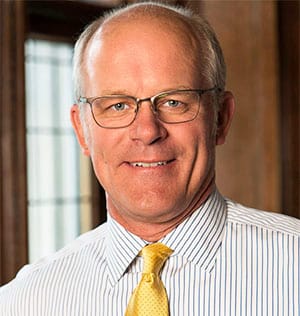When Georgia O’Keeffe moved to New Mexico in 1929, she spent a month at the Taos ranch of novelist D. H. Lawrence. For portions of each day, she lay down on an old bench beneath a large ponderosa pine. In an interview years later, O’Keeffe spoke warmly of that bench where she daydreamed and soaked in the sky. Her early painting The Lawrence Tree, depicting stars poking through the tree’s branches at night, is now in the permanent collection of the Wadsworth Atheneum Museum of Art in Connecticut. If you visit, you may notice that the tree appears upside down. The museum originally showed the painting in the other direction but later flipped it over, noting that O’Keeffe considered the orientation to be ambiguous. It’s hard to know what’s upside down and right side up when reposing on a bench and looking skyward.
Outdoor benches in American life have often served as stress relievers and relaxation havens. Forrest Gump could tell his whole life story from one to anybody willing to sit and listen. My wife and I travel to a Lake Michigan island every summer, where we end each day on a bench along the shore, watching the sun descend into the water. A park bench can also be a safe place for a young or awkward couple to get acquainted without having to look too frequently into each other’s eyes.
In metro areas today, park benches are becoming an endangered species. Hostile architecture is the name urban engineers give to public space designs that discourage people from settling in. Examples include sloped window sills, retaining walls with spikes, skateboard-inhibiting metal slugs, and benches with multiple armrests to deter those looking for a bed.
One rainy night last spring, I stayed at work later than usual. As I was leaving my church office close to midnight, I realized I had parked on the far side of our facility. That’s a football field’s distance away from the security system keypad. I knew I had 45 seconds to wind my way through our network of buildings before motion detectors would trigger the alarm. I carefully rehearsed the shortest path. Clutching my book bag in one hand and my briefcase in the other, I set the alarm and took off running.
Through pitch-dark corridors I verbally counted off the seconds. When I finally hit the crash bar of the windowless exit door, it barely opened. A man, it turns out, was sleeping immediately outside.
He sat up, disoriented. “I’m so sorry,” he said. “I was just trying to get some sleep.” Pointing across to the city park, he added, “I can’t sleep on those benches. Not allowed after dark.” I apologized profusely for smacking his back so hard. We visited briefly. I encouraged him to try to fall back asleep. He said he was fine, though I still wonder if I didn’t crack some vertebrae that night. I headed into the rain and drove off.
When someone enthusiastically exclaims to Jesus one day, “I’m going to follow you wherever you go,” Jesus replies, “Foxes have holes, and birds of the air have nests, but the Son of Man has nowhere”—more literally, “no ‘where’ ever”— “to lay his head” (Matt. 8:19–20). As much as he is describing his personal circumstance, Jesus is also warning a wannabe disciple that following him is rough business. There’s discomfort, privation, and limited security. Followers may not always or often be able to get a good night’s sleep, for there’s no assurance that a secure “wherever” even exists.
I didn’t sleep well that rainy night, disappointed in myself for having mistaken a commitment to Jesus from the “wherever” of my own warm bed for the duty of tending more helpfully to him there in our church doorway.







